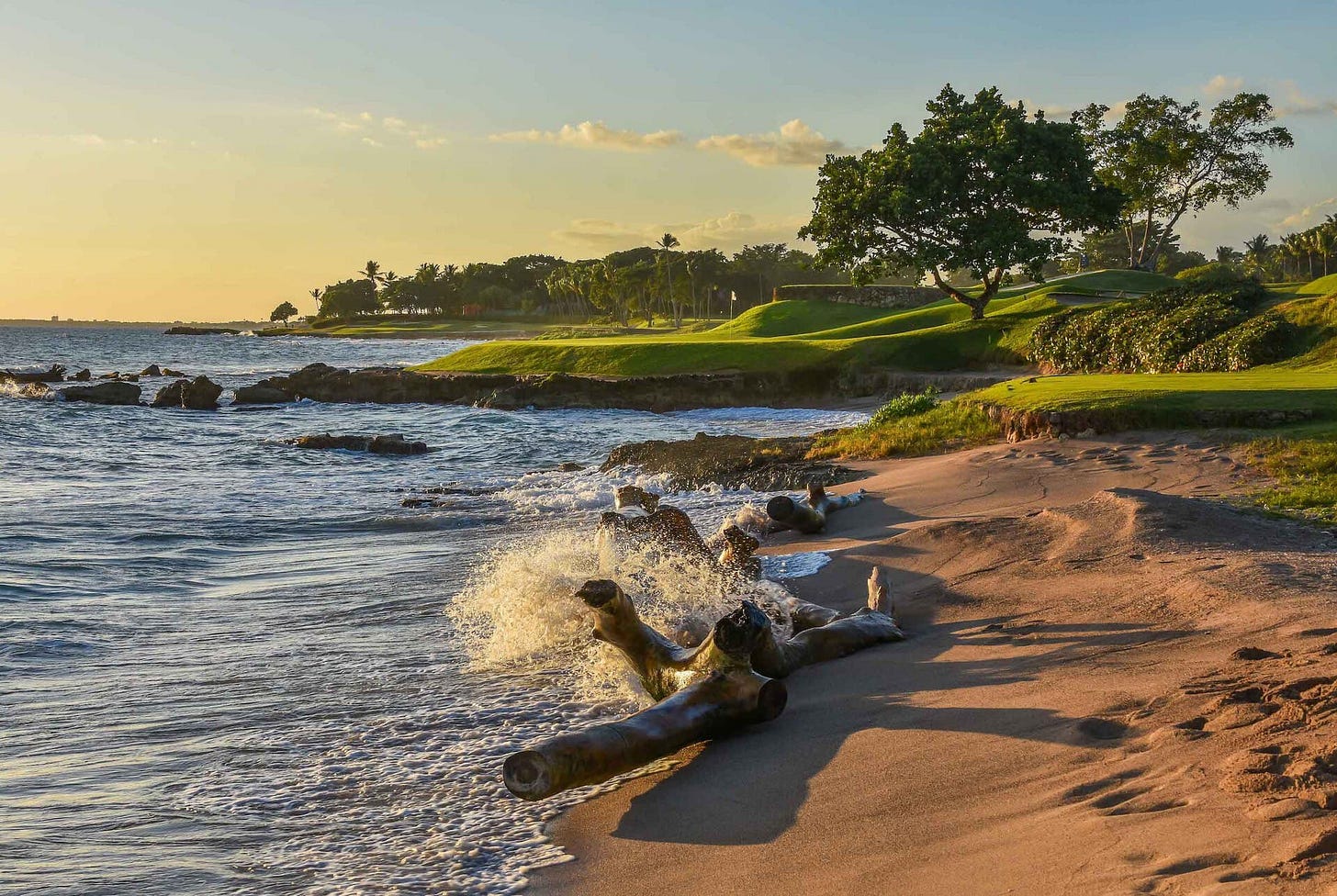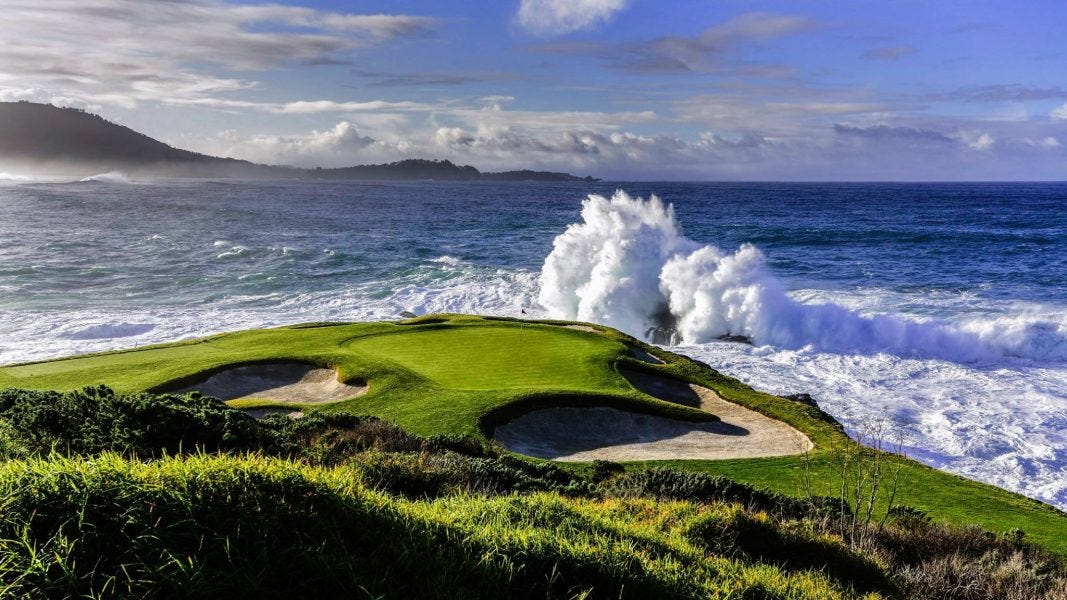The Impact of Grass Types on Professional Golf and Your Game
As the PGA Tour crosses back and forth from West to East coast, grass types, specifically putting surfaces, are a constant talking point.
The grain of the grass takes a particular focus in southern climates where the heat resistant strains tend to push and pull the golf ball more than northern varieties. The afternoon clumps of grass noted at Pebble Beach with its Poa Annua to the burnt cup edges at PGA National with its Bermuda, the warm zone growing grass are hearty.
The warm zone growing climate includes Poa Annua (PoAnna), Bermuda, Zouysia and Kentucky BlueGrass. Other less seen varieties include Bahia, El Pastello and Seashore Paspaul. There are many factors in choosing a warm climate grass and significantly more genres.

Cool zone growing climate grasses include Bent, Fescue and Rye. Bent grass takes the lion-share of utilization on northern golf courses with its consistent surfaces.
The region in the middle, the transition zone, can support Bent, Bermuda, Bluegrass and Rye grasses. The type of grass chosen will depend on when a course wants their grass to grow, a northern grass in the spring and fall, a southern in the summer. Additionally, southern courses may overseed with a northern grass, namely Rye grass, during their colder months. An overseed grows a temperature supported grass over the top of the existing grass to create ideal conditions in colder temps.
Temperature is not the only factor in the grass type chosen for the course. Water availability, soil type, weather, bugs and salt all play a factor.

Bermuda is the champion of the south with fast recovery time and athletic resistance making it ideal for heavily trafficked areas. It requires a lot of sunlight to grow and can grow in both stolomatic and zygomatic clumps requiring upkeep. The signature of Bermuda can be found on its putting surface as Bermuda will leave a burnt edge of the putting cup, a portion of the ring that appears to be dead is the way the ball will fall with the grain. Drawbacks to Bermuda include this pull on the golf ball, that can be minimized with frequent mowing, a tendency for the grass to grip leading edge of the club and rough that allows golf balls to nestle both when it's lush and when it's dormant (out of growing season). It is more than likely if you are in the southern USA away from the coast, you are playing on Bermuda grass.
Bermuda Course Played: Arnold Palmer’s Bay Hill Club and Lodge – TifEagle Bermuda

The titan on greens in cold to intermediate climates and in fairways and rough in the north is Bentgrass. Considered a higher maintenance grass, Bent requires more water and upkeep than its southern cousins. Greens require little reading of the grain as it tends to push the golf ball less than other grass types. This grass can be affected by heavy play and traffic and requires consistent seeding, fill and water. Although the grain is not as noticeable on the greens, it is in the rough. Rough of considerable length will play much easier down grain and produce fliers (a golf shot going too far as grass gets between the club face and ball, reducing the spin and making it “jump”) while hitting into the grain can cause a pull as the grass grabs the hosel of the club. These down and up grain lies are also felt when chipping around the green. Advancements in grass genetics have allowed courses to reduce the water needed for upkeep and allow for growth in shaded areas. It is more than likely if you are in the northern USA away from the sea-coast you are playing on Bentgrass.
“The Classic at Madden's uses a mixture of some of the best new varieties available, mixing 777 and Macdonald varieties, to reap the best benefits of both. The Classic will upgrade half of the tee boxes to this new variety this fall and the other half next spring making all new tee boxes able to play new variety of Bentgrass by early summer of 2025,” said Tanner Schoenfelder of Madden’s on Gull Lake and The Classic.
Bentgrass Course Played: The Classic at Madden’s – Bentgrass 777 and Macdonald

Seashore Paspalum is similar to Bermuda in its athleticism and resistance to wear and tear. Its bladed texture is different from the weave patterning of other southern grasses. This can lead to easier greens to read and chipping surfaces that don’t have the same grab as Bermuda. The golf is incredibly playable and fair until you find it grown out in the rough where the golf ball can sit down dramatically. Unlike Bermuda, Paspalum is very dense, putting significant grass between the club and the ball in longer lies. The most distinctive characteristic of Paspalum is its location. It is the only golf course grass that can survive and thrive off of seawater, because of this it is found close to the coast and on islands.
Seashore Paspalum Course Played: Teeth of the Dog – Pure Dynasty Paspalum

Unruly and fast growing, Poa Annua (Bluegrass) is seen as a weed in some lawns. Found mostly on coastal courses not directly impacted by seawater and used as a preferred putting surface in the past, it is a prominent grass. Its popularity has fallen over time, however, as the turf, if not maintained with high frequency, can become bumpy and have inconsistencies. It is said that the texture of the grass can change from the morning to the evening. It can excel in areas with high traffic and those with limited sunlight.
Poa Annua Course Played: Pebble Beach Golf Links

The north is dominated by Bentgrass but there is a time and a place for the other grass used in cool temperatures. Rye grass’ use through the southwest US is well documented as overseed, a way to keep golf courses green as they enter colder seasons. This offers players very distinctive color differences between seeded and non seeded areas. The contrast is beautiful. Rye can be used as a primary grass as well. When cut short it stands upright much like a bent grass. Use through the entire course is very rare as it does not perform well on greens.
Rye Course Played: PGA West



